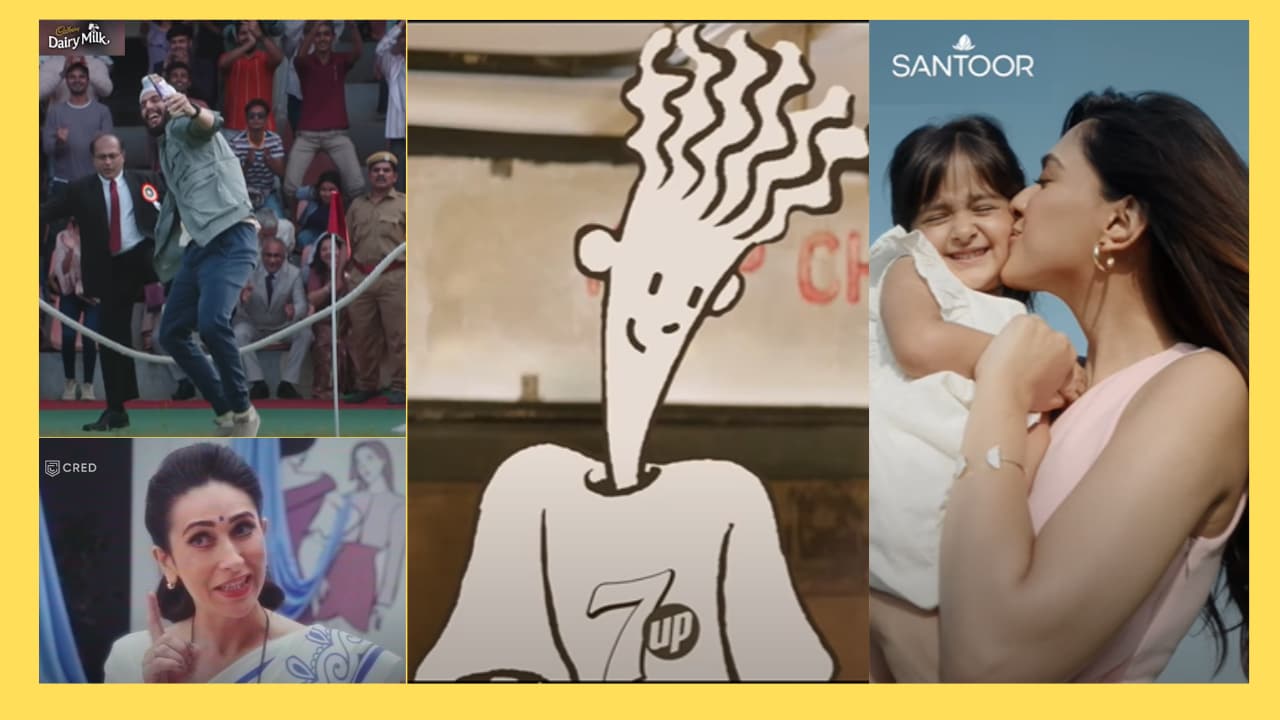IRL (in real life) when nostalgia is triggered, a flurry of emotions is released, taking consumers back to moments of happiness. When they see brands adding a tinge of nostalgia in their advertising and marketing strategies, it creates an instant connection, building up impactful conversations and engagements.
Fintech firm CRED is one such example. Right from the inclusion of comic characters like Chacha Chaudhary and Suppandi, recreation of 1990s musical show Antakshari featuring actors Renuka Shahane and Annu Kapoor to Karisma Kapoor giving the feel of Nirma’s Deepikaji, their commercials serve a dose of nostalgia on a platter.
Then there is the 1994 Cadbury ad that was reimagined and released last year. In the original ad, when the male cricketer scored the winning run, a lady, presumably his girlfriend, ran past the security personnel and performed a celebratory dance on the field. In the 2021 commercial, there was a gender twist, where the boyfriend broke into a dance to celebrate his girlfriend’s smashing performance.
In the case of mascots, in 2018, 7Up’s lovable mascot Fido Dido made a comeback, featuring again in updated commercials for the soft drink brand.
So how relevant is nostalgia in marketing and advertising in today’s times? Vinay Kanchan, brand storyteller, says, “Nostalgia is inbuilt in the concept of branding and it is a powerful root to tap into, if brands utilise this strategy well. To me, a brand is a mini-dose of nostalgia for it is all about making the audience return to a memorable experience. For example, when famous Bollywood songs from the 1960s and 1970s are used as a background score in the commercials, various memories resurface.”
The effectiveness of nostalgia
Kanchan cites the examples of Paper Boat and Saregama Carvaan which have made good use of a wistfulness of the past in their communication. Paper Boat, homegrown beverages company founded in 2013, tapped into nostalgia by introducing some classic Indian drinks like Nimbu Paani, Aam Panna, Panakam and Thandai. The brand campaigns for these products infused time travel as a theme to transport consumers to childhood memories.
When Saregama Carvaan, a retro-looking portable digital music player, was launched in 2017, it sold a million units in just 18 months. “Saregama Carvaan tapped into an entire generation of people who found today’s music unrelatable and wanted to travel back to times when songs resonated with their tastes,” says Kanchan.
How many of you remember the commercial for Havells fans starring late actor Rajesh Khanna? As the commercial opens, Khanna’s voice in the background says, “Fans kya hote hain, mujhse pucho”, which is followed by a showcase of snippets from his younger days with fans swooning over him.
“Anybody who was around in the 1970s, they would be aware of the hype around the film star. This ad touched a chord with many who witnessed the emergence of a great hero. This is one example of tapping into nostalgia by using a celebrity,” adds Kanchan.
Using consistency as a strategy
Recently, Santoor re-launched its classic Santoor sandalwood and turmeric soap. The campaigns retained the brand’s unique positioning of ‘Mummy’, which raises the question, “Why can’t a mother look young and be a ground-breaker in her chosen vocation?”
But S Prasanna Rai, vice-president, marketing, at Wipro Consumer Care and Lighting, does not look at this as a case of nostalgia marketing. For the last 30 years, Santoor has maintained consistency with the unique positioning of younger-looking skin. The approach has been to present the Santoor protagonist, whom they call ‘Santoor mom’, in a relevant way to the present contemporary women of the country, depending on what her aspirations are.
“When we started off, we presented women in a typical home-bound manner, and today we are talking about ‘Look young and think young.’ We did not deviate from the positioning which is why the ‘Mummy angle’ is still there. But we brought in the thought of ‘kyun nahi’, which challenges the stereotype. This positioning has helped us grow and gain market share in this category, which is highly penetrative. We do not believe in tapping into nostalgia but in maintaining consistency in advertising,” he explains.
Rai explains that nostalgia marketing works well if the target audience is clear in the brand’s mind, which will further add relevance. He says, “If a brand is targeting people in the age group of early 20s, and if they recreate a two-decade-old ad or add elements of nostalgia, I am not sure that it would work. Because the audience to whom they are targeting their communication would not even have been around. If a brand is targeting an age group who are in their mid-30s, and who remember a two-decade-old ad, then including nostalgia in marketing and advertising might work.”
Kanchan seconds Rai’s view. The other point that the brand storyteller mentions is that brands need to consider what they are trying to achieve by using a whiff of nostalgia in advertising and marketing. “What is the exact marketing objective? Is it that the reintroduction of a particular product will give them that boost in the market? Is it the reintroduction of an icon which will create chatter around them in the market? There should be clarity of thought in the marketing objective, and also a clear understanding of what they are trying to position in the prospective audiences’ mind over why they are taking them on a nostalgic trip,” Kanchan concludes.
